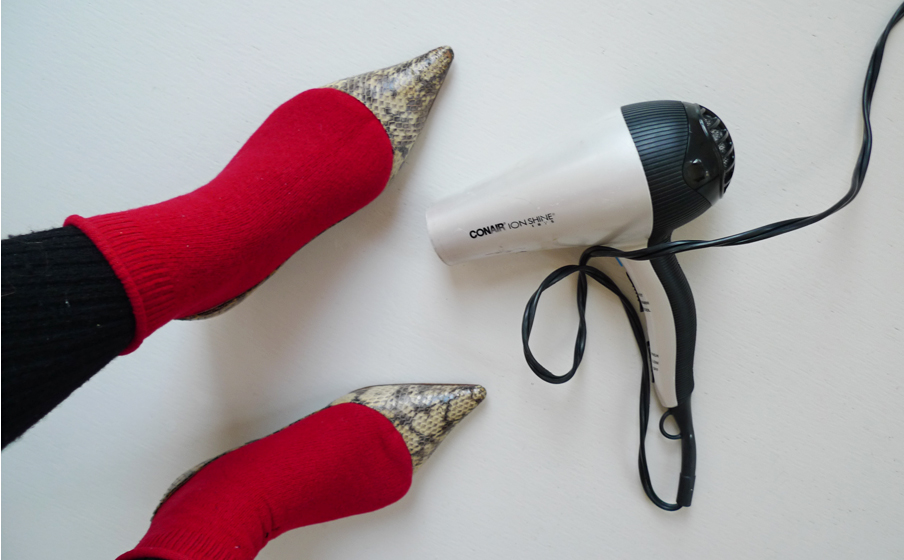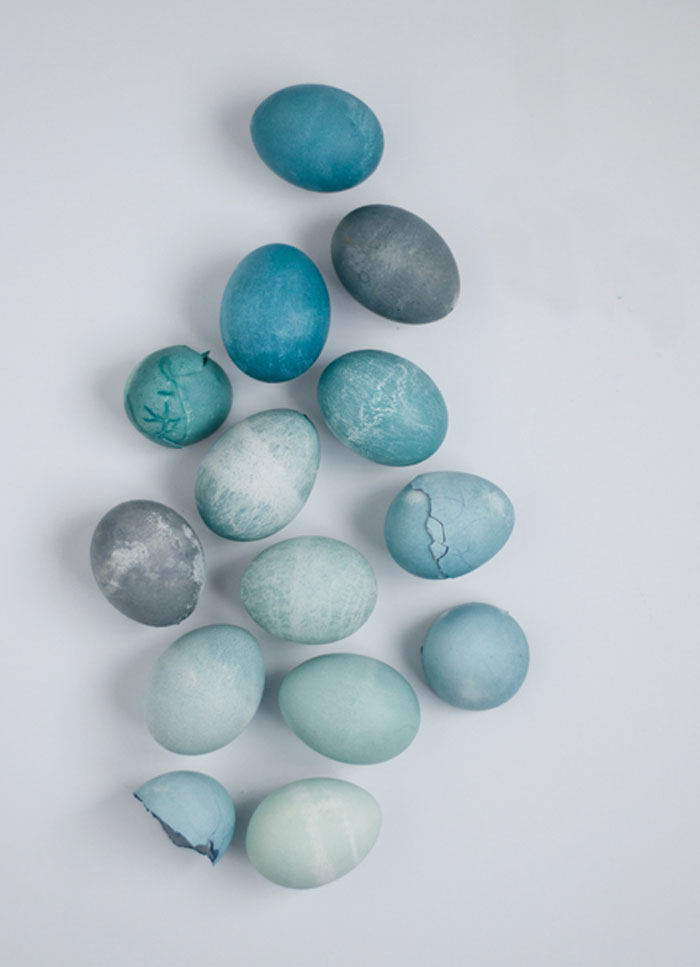
Two thoughtful contributors sent us info about making natural dyes to color your eggs for Easter or spring celebrations. It spurred us to hone a simplified method for naturally coloring glorious eggs, just in time for the Sunday hunt or gathering…
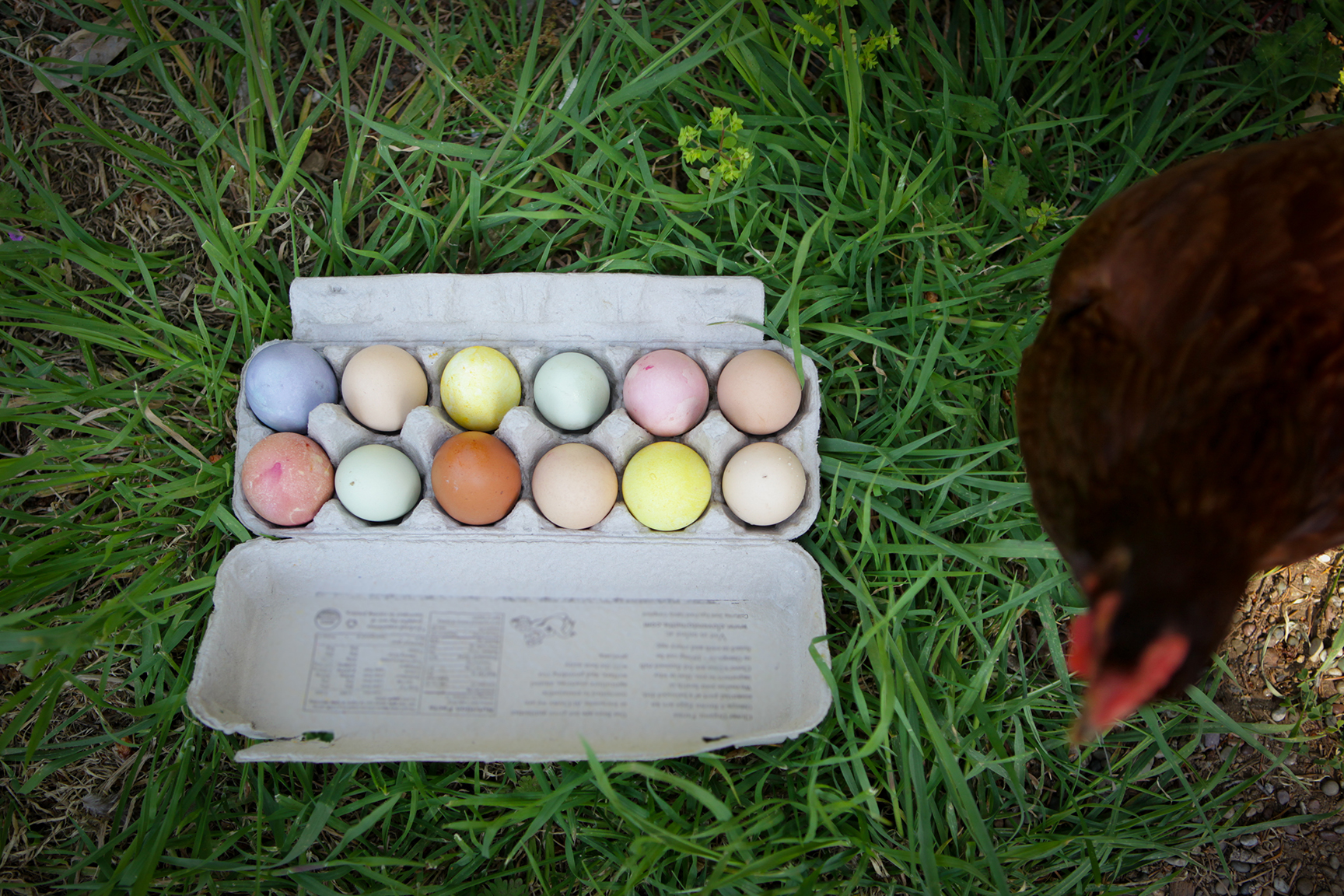
Johanna sent us to a great article by Mountain Feed Farm and Supply. It works perfectly in tandem with this ‘Egg Dying Naturally’ from Delicious Living magazine, a downloadable pdf via Susan Dworski. You can make dyes from all sorts of materials: beets, cabbage, onions skins, parsley, coffee… The color of the shell – whether brown or white — will effect the color so check out Delicious Living’s formulas.
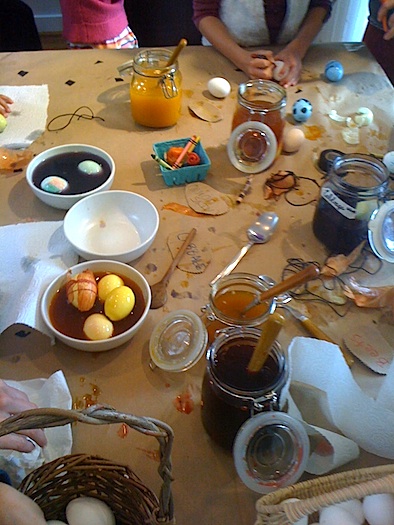
Although we love the idea of a messy sea of natural colors play with, making a bunch of different natural dyes seems daunting right now. We’ll do as the Greek’s do (and our Greek mother did): dye the eggs ONE color, in their case, unbelievably deep, saturated red.

We’re thinking a basket of blue or yellow eggs could be rather surprising and beautiful. If we’re really lazy, we’d use the trick of a Greek guy we saw on YouTube: he didn’t boil the eggs ahead of time but, rather, simmered them in his homemade dyes for 5 or 6 minutes. Then he let them cool in the dye. It’s an effortless way to get rich color although you wouldn’t be able to pull them out when they hit different color saturations. (Be sure to add a couple of tablespoons of white vinegar).
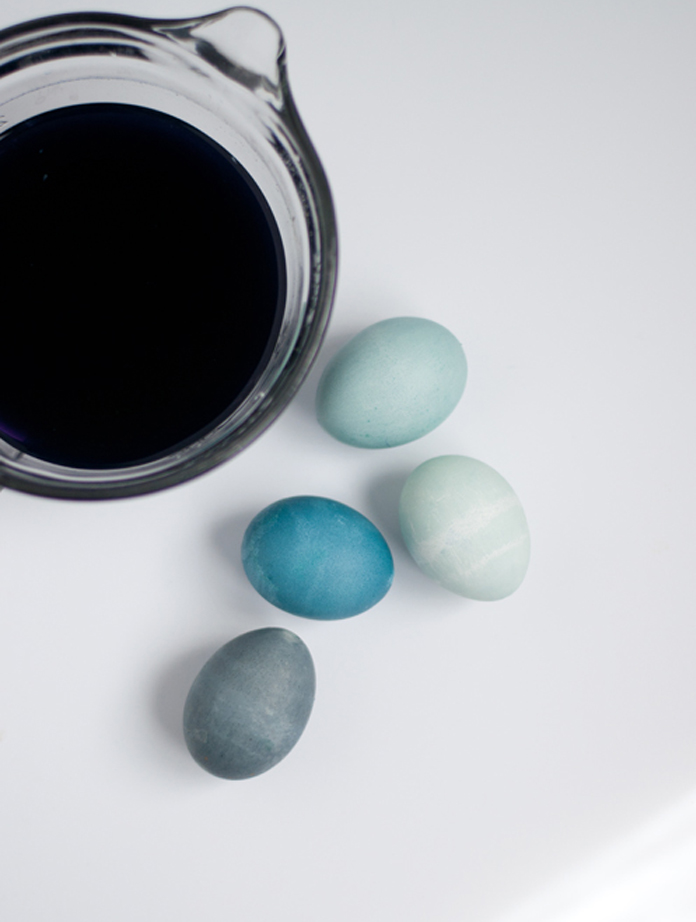
We found a great tutorial for cabbage-dying blue eggs here (the secret to true blue is a pinch of baking soda). They’re as charming as Robin’s eggs:
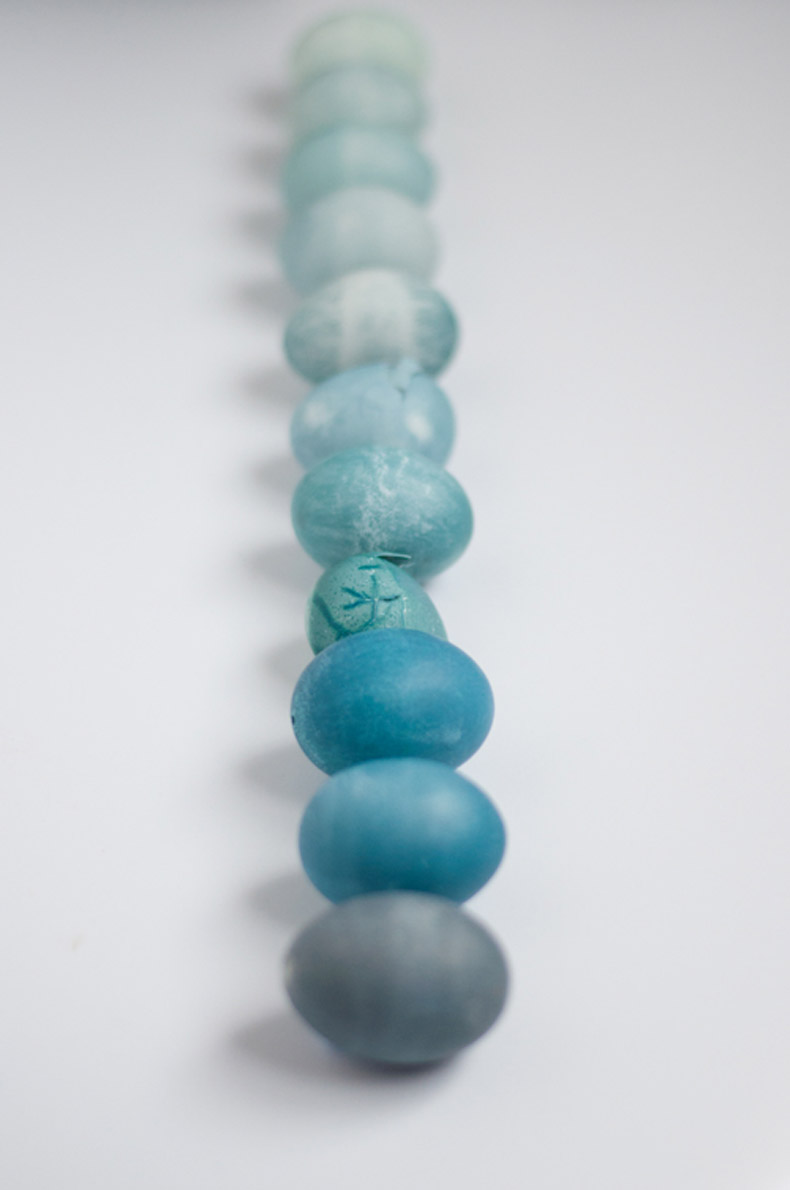
Feeling too lazy to cook up even one dye? You can always just draw designs on them with a marker, tape or paint…
Wonderful blue eggs via Design Mom.


